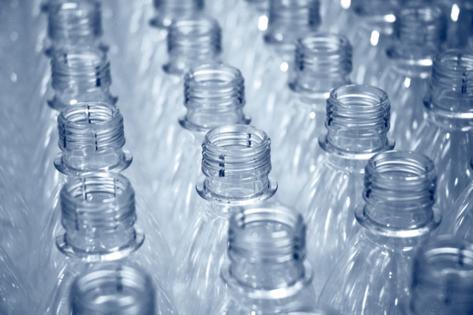What's lurking in your body? Mayo probes health risks of tiny plastic particles
Published in Health & Fitness
Similar to natural elements like iron and copper, people can ingest, absorb or even inhale microplastics and nanoplastics and their chemical additives. A landmark study just published in the New England Journal of Medicine links microplastics and nanoplastics found in plaques of human blood vessels to a potential increased risk of heart attack, stroke or death.
Building on previous discoveries and these recent findings, the exposome research of Konstantinos Lazaridis, M.D., and his team at the Mayo Clinic Center for Individualized Medicine, is at the forefront of exploring how external exposures — such as microplastics and nanoplastics, chemicals and pollution — influence health.
Exposome research investigates the cumulative environmental exposures throughout a person's life and how those exposures interact with genetic factors to affect biology and health.
"We plan to investigate the systemic effects of microplastics and nanoplastics and their chemical additives, not just on liver health, but overall human health," says Dr. Lazaridis, the Carlson and Nelson Endowed Executive Director for Mayo Clinic's Center for Individualized Medicine.
Dr. Lazaridis has dedicated his career to investigating the genetic and environmental underpinnings of rare liver diseases, such as primary sclerosing cholangitis and primary biliary cholangitis.
Tucked beneath the protective right rib cage, the human liver is a vital organ, often referred to as the "body's powerhouse" due to its pivotal role in digestion and blood detoxification. While genetics play a role in its overall function, emerging research reveals environmental exposures also have a significant influence over liver health.
Do microplastics affect liver health?
Dr. Lazaridis seeks to draw parallels from existing medical knowledge on exposures of essential metals like iron and copper and their effect on liver function and disease. In the field of hepatology, it is well known that iron and copper, obtained mainly from dietary sources, play pivotal roles in critical processes such as oxygen transport and red blood cell production.
Excessive accumulation of these otherwise innocuous metals, because of genetic defects, can lead to liver damage and disease.
Microplastics and nanoplastics are miniscule fragments resulting from the breakdown of larger plastic items. They are often laced with chemical additives to enhance their flexibility and durability. Microplastics and nanoplastics have been found to infiltrate every corner of the globe. Their small size allows them to be ingested, absorbed, or inhaled, raising potential health risks.
Dr. Lazaridis emphasizes these findings raise concerns about the long-term effect of microplastics and nanoplastics, particularly for young people.
He says the urgency of the research is underscored by the current rate of plastic production, which stands at an estimated 400 million tons per year — a number projected to double by the year 2050.
"Plastics have made our lives more convenient and spurred many medical advances, but we must understand their impact on human health for the years to come," Dr. Lazaridis says.
Ultimately, he hopes to advance the understanding of long-term implications of microplastic and nanoplastic exposures, and to chart a course for individualized therapeutic interventions in a comparable way clinicians have for iron and copper accumulations in susceptible people.
©2024 Mayo Clinic News Network. Visit newsnetwork.mayoclinic.org. Distributed by Tribune Content Agency, LLC.







Comments